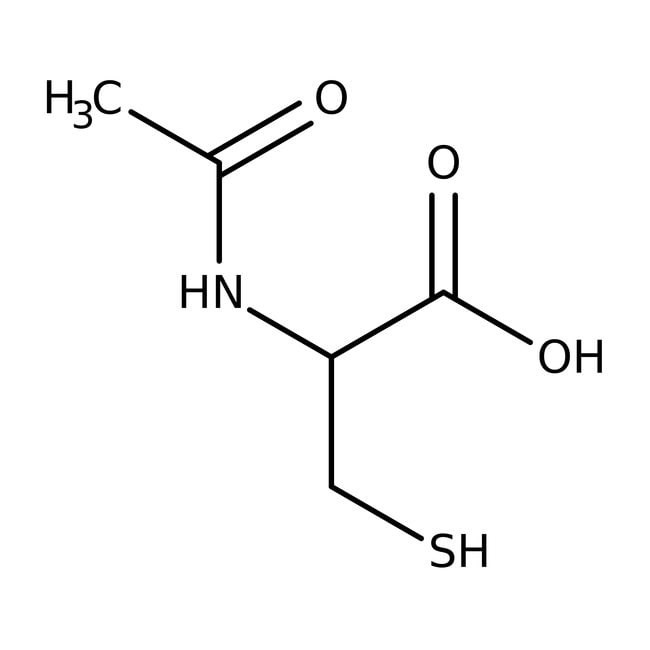How A lot Do You Charge For N Acetyl L Cysteine
페이지 정보

본문
 It has been found, surprisingly, that the novel amino acid substitutions and/or amino acid deletions of the carboxyl terminus of the serine acetyltransferase result in a diminution within the cysteine sensitivity whereas at the identical time permitting sufficient enzymic exercise to be retained. It is feasible to scale back the cysteine sensitivity of the serine acetyltransferase in vivo by producing, by means of expression vectors, antisense RNAs which are complementary to an outlined region of the 3' coding strand N-Acetyl-L-Cysteine 98% raw material of the native or transformed cysE gene. The gene for serine acetyltransferase has already been cloned and the amino acid sequence which is deduced from the DNA sequence is known (Denk, D. and Bock, A. 1987, J. Gen. Microbiol. In addition, O-acetylserine sulfhydrylase B (cysM) is ready to make the most of thiosulfate as a sulfur supply (Sirko, A. et al., 1987, J. Gen. Microbiol. Methods for introducing mutations at specific positions inside a DNA fragment are identified and are described, for instance, in the following publications: Sarkar, G., Sommer, S. S., 1990, BioTechniques 8: 404-407 describe site-specific mutagenesis utilizing PCR; Ausubel, F. M. et al., 1987, pp. Another technique of producing suggestions-resistant cysE alleles consists in combining totally different level mutations which lead to suggestions resistance, thereby giving rise to multiple mutants possessing new properties.
It has been found, surprisingly, that the novel amino acid substitutions and/or amino acid deletions of the carboxyl terminus of the serine acetyltransferase result in a diminution within the cysteine sensitivity whereas at the identical time permitting sufficient enzymic exercise to be retained. It is feasible to scale back the cysteine sensitivity of the serine acetyltransferase in vivo by producing, by means of expression vectors, antisense RNAs which are complementary to an outlined region of the 3' coding strand N-Acetyl-L-Cysteine 98% raw material of the native or transformed cysE gene. The gene for serine acetyltransferase has already been cloned and the amino acid sequence which is deduced from the DNA sequence is known (Denk, D. and Bock, A. 1987, J. Gen. Microbiol. In addition, O-acetylserine sulfhydrylase B (cysM) is ready to make the most of thiosulfate as a sulfur supply (Sirko, A. et al., 1987, J. Gen. Microbiol. Methods for introducing mutations at specific positions inside a DNA fragment are identified and are described, for instance, in the following publications: Sarkar, G., Sommer, S. S., 1990, BioTechniques 8: 404-407 describe site-specific mutagenesis utilizing PCR; Ausubel, F. M. et al., 1987, pp. Another technique of producing suggestions-resistant cysE alleles consists in combining totally different level mutations which lead to suggestions resistance, thereby giving rise to multiple mutants possessing new properties.

For this reason, the suggestions-resistant cysE alleles are preferably built-in into the genome as single copies using customary methods. Strains which include cysteine-delicate proteins, for instance prokaryotes or yeasts, are used as host strains. Since, in precept, cysteine metabolism proceeds by way of the same metabolic route, which is thought per se, in all microorganisms, and the strategies for use for making ready the novel strains are well-known, for instance from normal textbooks, and applicable to all microorganisms, novel strains might be ready from any microorganisms in anyway. The invention additionally relates to the preparation of L-cysteine, or of merchandise that are derived from L-cysteine, by means of cultivating novel microorganisms. The invention additionally pertains to microorganisms which comprise the feedback-resistant cysE alleles. The current invention furthermore pertains to DNA sequences which encode novel serine acetyltransferases. The coding sequences that are current on the vector are advantageously linked to regulatory parts that are required for expressing the coding sequences to the specified extent. Sequences which encode selective markers and/or reporter genes are also ideally present on the expression vector in addition to the regulatory elements.
 An additional increase in the cysteine yield may be achieved by moreover overexpressing the sulfate-decreasing enzymes (encoded by the genes cysD, C, H, G, I and J) and the sulfhydrating enzymes (encoded by the genes cysK and cysM). The formation of L-cysteine itself is catalyzed by two O-acetylserine sulfhydrylase isoenzymes (EC 4.2.99.8), encoded by the genes cysK (O-acetylserine sulfhydrylase A) and cysM (O-acetylserine sulfhydrylase B), a reaction by which O-acetylserine functions as a β-alanyl donor and H2 S as a β-alanyl acceptor (Kredich, N. M. and G. M. Tomkins 1966, J. Biol. The catalytic exercise of the different serine acetyltransferase enzymes is determined within the presence and absence of L-cysteine, and the inhibitor constant, Ki, is ascertained from this (Kredich and Tomkins, J. Biol. 1.1×10-6 M was decided within the presence of 0.1 mM acetyl-coenzyme A and 1 mM L-serine (Kredich, N. M. 1971 and Tomkins G. M. 1966, J. Biol.
An additional increase in the cysteine yield may be achieved by moreover overexpressing the sulfate-decreasing enzymes (encoded by the genes cysD, C, H, G, I and J) and the sulfhydrating enzymes (encoded by the genes cysK and cysM). The formation of L-cysteine itself is catalyzed by two O-acetylserine sulfhydrylase isoenzymes (EC 4.2.99.8), encoded by the genes cysK (O-acetylserine sulfhydrylase A) and cysM (O-acetylserine sulfhydrylase B), a reaction by which O-acetylserine functions as a β-alanyl donor and H2 S as a β-alanyl acceptor (Kredich, N. M. and G. M. Tomkins 1966, J. Biol. The catalytic exercise of the different serine acetyltransferase enzymes is determined within the presence and absence of L-cysteine, and the inhibitor constant, Ki, is ascertained from this (Kredich and Tomkins, J. Biol. 1.1×10-6 M was decided within the presence of 0.1 mM acetyl-coenzyme A and 1 mM L-serine (Kredich, N. M. 1971 and Tomkins G. M. 1966, J. Biol.
The novel serine acetyltransferases ideally have an inhibitor fixed, Ki, of from 0.005 to 2.Three mM within the presence of 1 mM L-serine and 0.1 mM acetyl-CoA, the place serine acetyltransferases having no less than one mutation preferably possess an inhibitor fixed, Ki, of from 0.015 to 2.3 mM in the presence of 1 mM L-serine and 0.1 mM acetyl-CoA, whereas serine acetyltransferases having at the least one carboxyterminal deletion preferably exhibit an inhibitor fixed, Ki, of from 0.005 to 0.03 mM in the presence of 1 mM L-serine and 0.1 mM acetyl-CoA. Strategies for integrating genes into the chromosome utilizing vectors whose origins of replication have been eliminated are state of the art (Winans et al., 1985; J. Bacteriol. It is a part of the state of the art to dam or modify gene exercise in a particular method by the use of so-known as reverse genetics using antisense RNA (Inouye, 1988, Gene 72: 25-34). Antisense RNA is the transcription product of the DNA strand which is complementary to the strand encoding the protein. The starting DNA fragment, encompassing, for example, the wild-kind cysE gene, is recombined on a vector utilizing known commonplace strategies for making ready recombinant DNA. The DNA of the wild-kind cysE gene, or a cysE gene which has been inactivated by mutation, or a cysE gene which has been mutated and which already encodes a feedback-resistant serine acetyltransferase, is preferably used as the beginning materials for the mutagenesis.
- 이전글Methods to Be taught Uniform Factory In Ajman 25.06.07
- 다음글Why Mass-Hydro Is a Scam: What Every Grower Should Know 25.06.07
댓글목록
등록된 댓글이 없습니다.